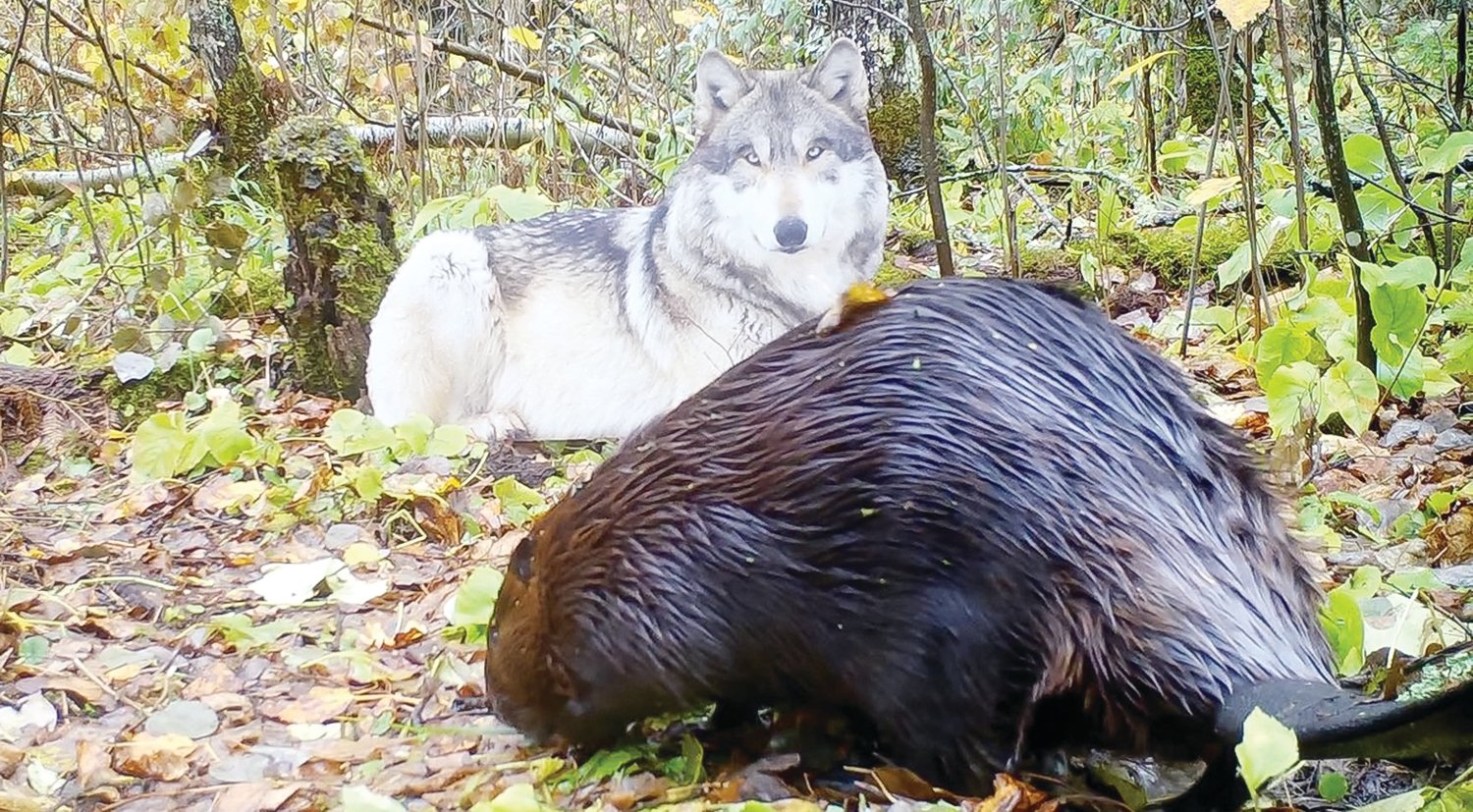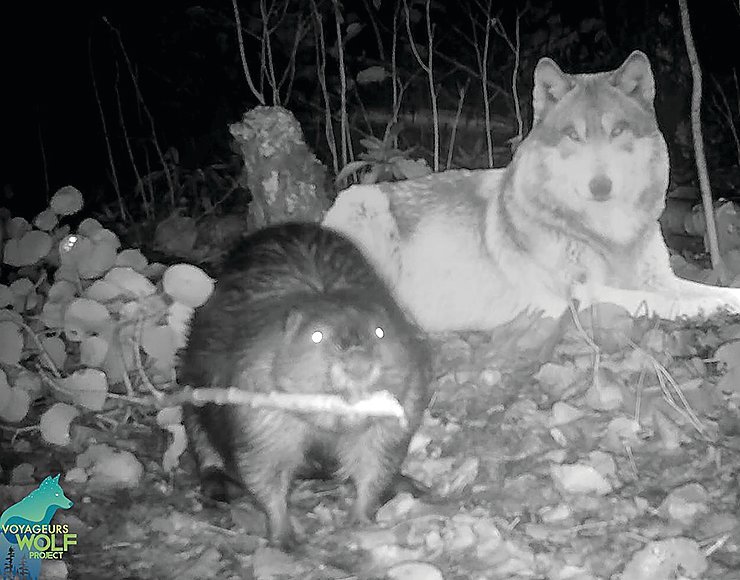Support the Timberjay by making a donation.
Study: Wolves use ambush to catch and kill beavers
With extremely poor vision, beavers rely on smell to detect wolves lying in wait
VOYAGEURS NATIONAL PARK— Fresh wildlife research conducted here is shedding new light on gray wolves— and it’s upsetting the traditional view of how these top predators pursue their …
This item is available in full to subscribers.
Attention subscribers
To continue reading, you will need to either log in to your subscriber account, or purchase a new subscription.
If you are a current print subscriber, you can set up a free website account and connect your subscription to it by clicking here.
If you are a digital subscriber with an active, online-only subscription then you already have an account here. Just reset your password if you've not yet logged in to your account on this new site.
Otherwise, click here to view your options for subscribing.
Please log in to continue |
Study: Wolves use ambush to catch and kill beavers
With extremely poor vision, beavers rely on smell to detect wolves lying in wait
VOYAGEURS NATIONAL PARK— Fresh wildlife research conducted here is shedding new light on gray wolves— and it’s upsetting the traditional view of how these top predators pursue their prey. The study, led by Tom Gable, a PhD researcher at the University of Minnesota, was published this week in the journal Behavioral Ecology.
For decades, biologists have considered wolves almost exclusively as pack hunters, which used cooperative chases and their stamina to run down large prey, often by exhausting animals like deer or moose.
Yet, wolves can also be solitary hunters, particularly during non-winter months, when they rely on beaver for much of their diet. But how does a wolf catch a semi-aquatic prey that spends little time on land and never ventures far from the safety of its pond? Turns out with patience, and a lot of waiting.
Through a variety of methods, an ongoing study of gray wolves focused on the greater Voyageurs ecosystem has demonstrated that wolves use ambush hunting, a method usually associated with cats, which wolves have successfully adapted to catching beavers.
This study challenges the classic concept that wolves are not ambush predators. “It is the first systematic analysis of wolf ambushing behavior,” said Gable “and overturns the traditional notion that wolves rely solely on hunting strategies that involve pursuing, testing, and running down prey.” Instead, wolf hunting strategies appear highly flexible with wolves able to switch between hunting modes depending on the prey they are hunting.
“Over a five-year period, we estimate that our field research team collectively put in over 15,000 person-hours to search nearly 12,000 locations where wolves had spent time. Through this effort, we ended up documenting 748 locations where wolves waited to ambush beavers but were unsuccessful, and 214 instances where wolves killed beavers,” said Sean Johnson-Bice, a co-author of the study.
Beavers have extremely poor eyesight and rely almost exclusively on their sense of smell to detect predators on land, which is where they are most vulnerable. While large in size and remarkably strong when it comes to hauling logs and branches, beavers have few defenses on land against a predator the size of a wolf— other than trying to avoid them. Yet, they can’t rely on eyesight to do that. Indeed, a video prepared by the researchers, using a life-sized cardboard cutout of a reclining wolf, showed that beavers were all but oblivious to the visual indicator of a predator in wait.
The new research reveals that wolves recognize the beaver’s reliance on smell and that they carefully positioned their ambush sites downwind of areas where they expected beavers might be working.
“The results are very clear” says Tom Gable, the study’s lead-author: “89-94 percent of the ambushing sites were downwind, where beavers were likely unable to smell wolves.”
Gathering data on how wind direction influences wolf ambushing behavior wasn’t easy, note the researchers. “Scientists have long thought that ambush predators are able to strategically choose ambush sites in areas where prey are unable to detect them via scent. Until now though, documenting these hunting tactics in exhaustive detail proved extremely challenging.” he adds.
When staking out beavers, wolves appear to also be surprisingly patient. They spend substantial periods of time waiting next to areas where beavers are active on land, such as near beaver dams and trails. “Wolves waited an average of 4 hours during each stakeout. But they often waited 8-12 hours or more, and one wolf even waited-in-ambush for 30 hours!” said the study’s second-author Austin Homkes.
The researchers note that these behaviors were not unique to a few wolves. Instead, wolves from multiple packs across several years used the same ambushing methods, suggesting that this behavior is widespread throughout the Voyageurs ecosystem and likely other boreal regions in North America where wolves hunt beavers. Voyageurs National Park is home to an estimated 3,000 beaver, but the species is commonly found throughout northern Minnesota. With less competition from human trappers than in the past, wolves appear to be taking advantage of the bounty, at least in those months of the year when beaver are available. Related research from Voyageurs has documented that beavers make up an average of 42 percent of a wolf’s diet in summer. While beaver remain active throughout the year, they spend the winter months within their lodges, which are largely impregnable to wolves.
Notably, wolves and beavers are found in the same habitats throughout much of the northern hemisphere, so the implications of the latest research have wide applicability, according to the research team.









